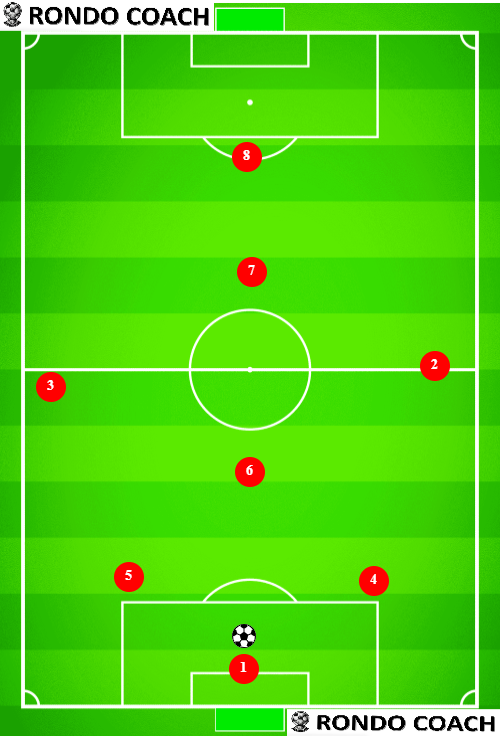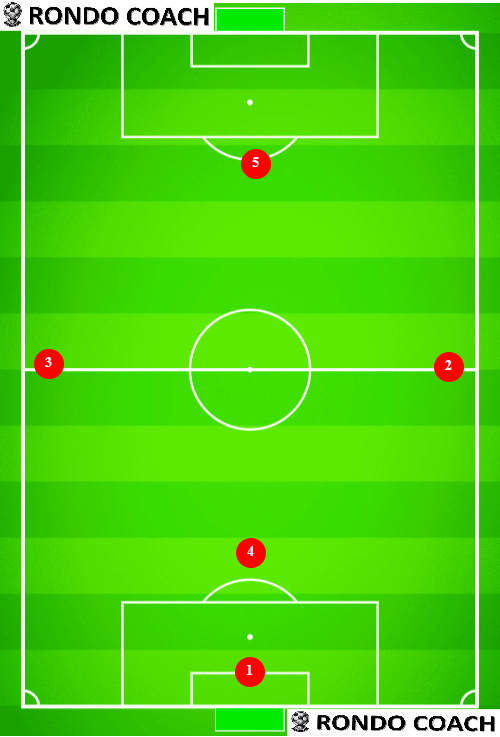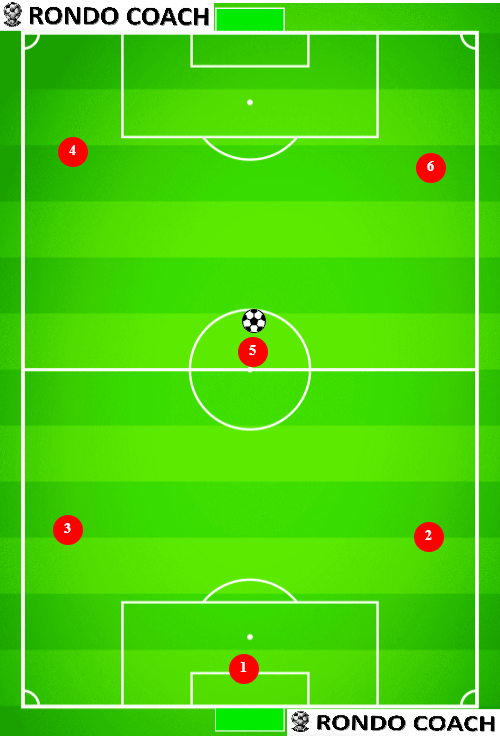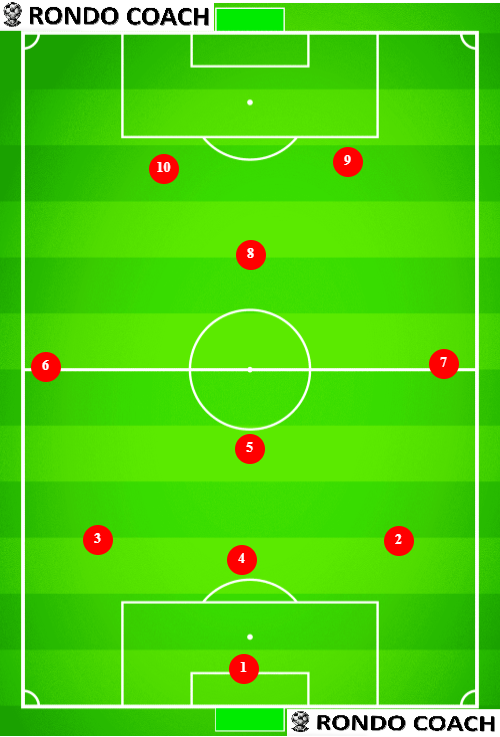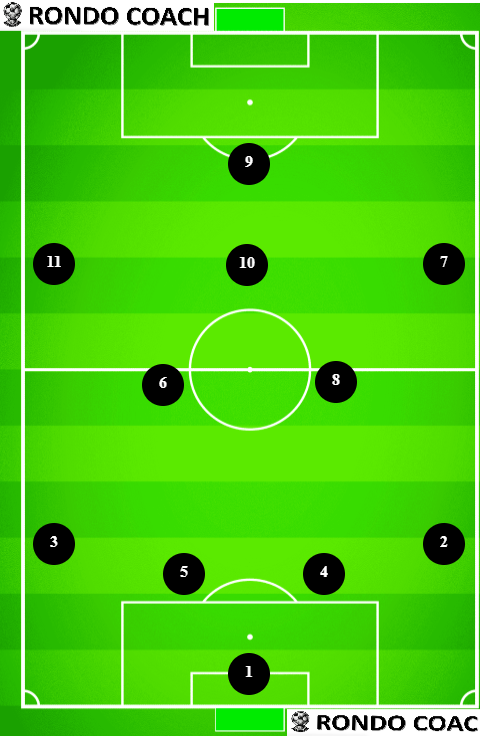How to choose youth soccer formation? [Guide for Coaches 2025]
What youth soccer formation should I pick for my team?
Whenever I talk to a newer coach, they always ask me which youth soccer formation works the best to dominate and win games. The real question is which formations should I use at the youth level to develop the players that will dominate in their teen years. Each player needs to develop for multiple positions and roles on the soccer field, depending on their mindset. So let’s analyze the progression of the youth soccer formations with the assumption that we want to get to a 4-3-3 or 4-2-3-1 formation at 11v11.
Soccer formation for 4v4 (U8 and younger)
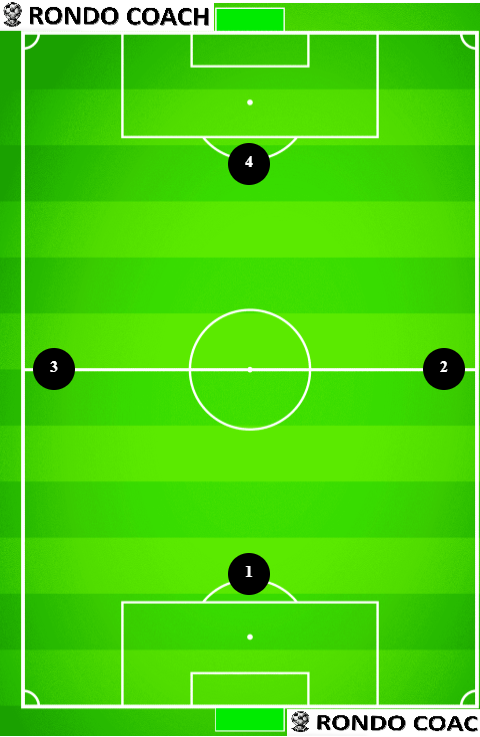
There is really not much to choose in this case. The diamond shape, with no goalkeepers) will teach players what it means to play on the wings and what it means to play up or down the pitch. At this age (U8 and younger), that is all they need to learn. Each player should experience playing in each of the 4 positions.
Formation for 7v7 (U9 and U10)
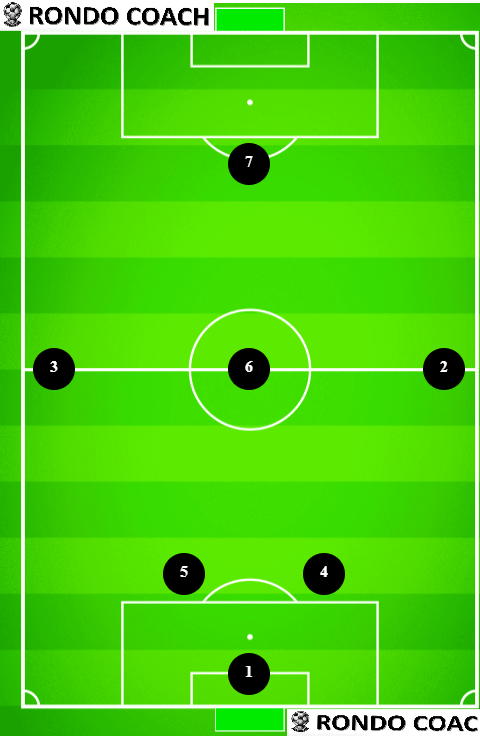
This is the most common youth soccer formation for 7v7 and for a good reason. The new players here are 4, 5, and 6. Player 1 became a goalie, but this is when they need to understand that they are part of the team and that we attack with 7 players, including them. Players 4 and 5 start to build their partnership in defense and this is the ideal time to teach them to communicate and collaborate with each other, especially without the ball. Player 6 (defensive midfielder) is also the 8 (central midfielder) and 10 (attacking midfielder), and usually the best player – it is the hardest position to play and will make or break the team. Not everybody will experience playing at this position, but the several players that play there through the seasons should try to play in the different defensive and attacking roles.
Formation for 9v9 (U11 and U12)
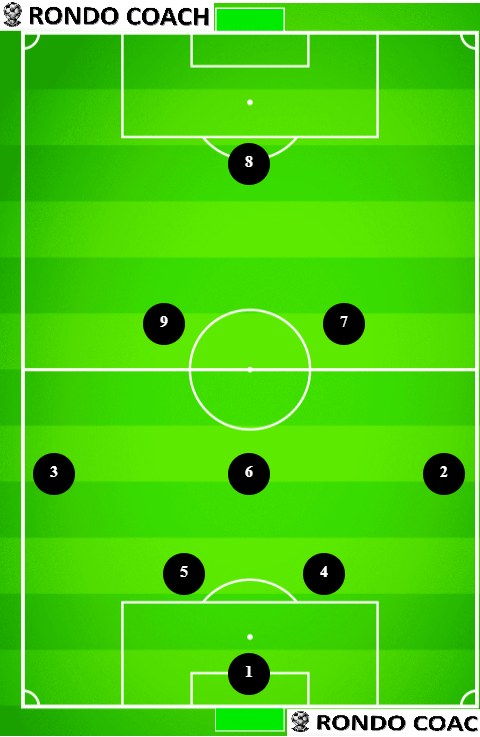
Games are won and lost in the middle of the pitch. This is the age when specializing the midfielders makes sense without disturbing the squad. Adding two more attacking-minded midfielders and giving them the freedom to occupy the flanks when needed. The defenders learn how to shift sides because the field is getting wider and we introduce the overlaps at this point for the wingers.
This is the most controversial one and it is because parents and coaches start to care about results and not about development. The common youth soccer formation at this age is 3-1-3-1 which often leaves 1 or at most 2 attackers through the middle and it often translates to a defensive kick-and-run mentality. That might not be the biggest issue – the painful truth is that players develop less in this formation. The goalkeeper doesn’t play with their feet because the central defender does that role. The wide defenders don’t run up and down because they need to stay defensive and there is no space on the flanks. The wingers stick to the sides and the creative attacking midfielders cannot be creative because they need to stick to their position and be both 8 and 10.
Formation for 11v11 (U13 and up)
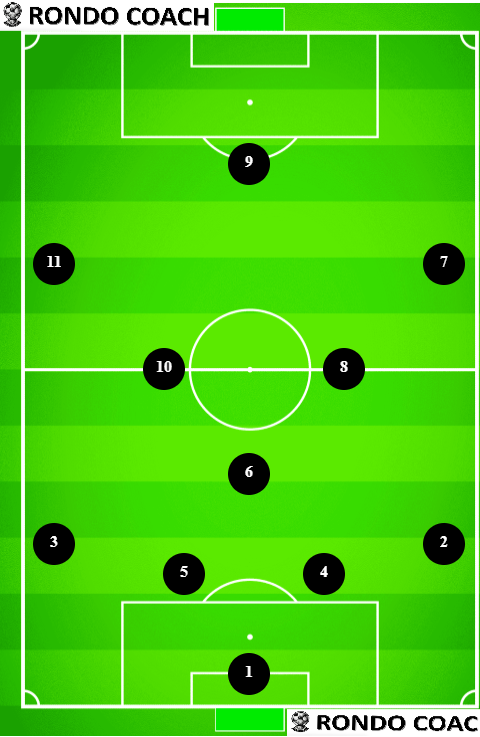
Everything comes together at 11v11, as you can see in the youth soccer formations video, and this is how we set our best soccer formation in a 4-3-3 shape, at least the first year of playing on the full field. The most common question I get is why we play with two central instead of two defensive midfielders. Firstly, we do this because it’s the natural progression of the 9v9. Secondly, we do this because #10 is the hardest position to play and there is no reason to pick somebody to carry that responsibility – if they do that already, they will naturally convert to it. The roles of the two central midfielders can be anything, from box-to-box midfielders to carrileros. Finally, until U14, the formation has nothing to do with finding the optimized way to win and it’s all about making a platform to develop players; if we forget that, we have missed the point of the entire exercise.


